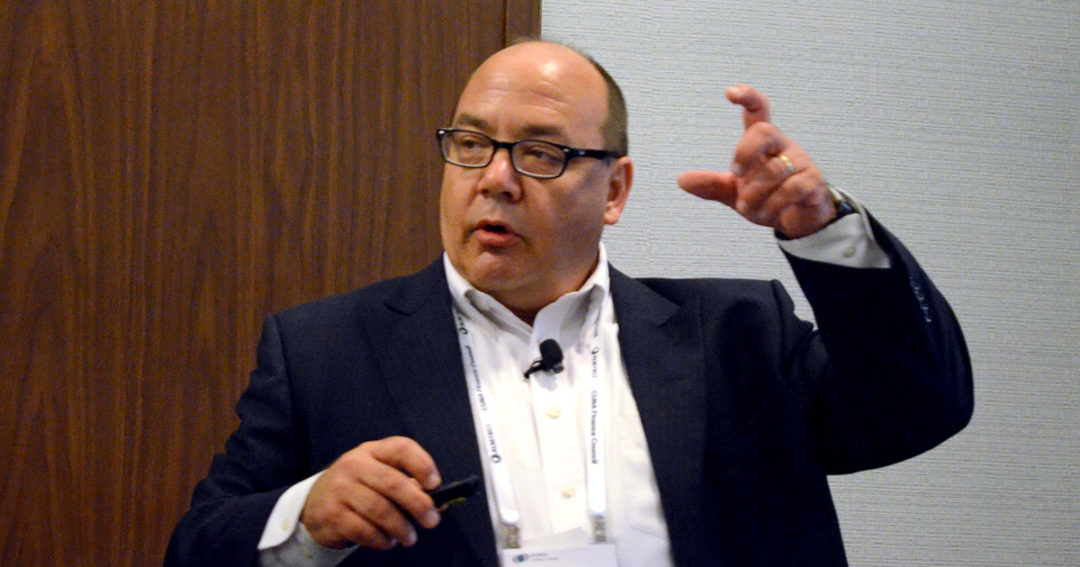news.cuna.org/articles/116051-sharing-liquidity-wisdom

Sharing liquidity wisdom
ALM begins and ends with liquidity management, financial expert says.
May 20, 2019
Asset-liability management (ALM) begins and ends with liquidity, according to Frank Santucci, managing director of Stifel Financial Corp.
During a breakout session at the 2019 CUNA Finance Council Conference Monday in New York City, Santucci offered nuggets of wisdom that attendees could apply at their credit unions. The wisdom includes:
- A good measure for smaller credit unions is to manage liquidity to their worst year on record. “If your loans are growing faster than shares, you’re still probably going to make a lot of money,” Santucci says. “That’s not a bad situation. That’s the funny thing about liquidity management.”
- Credit unions typically see most of their deposits in the first quarter because that’s when members receive tax returns. Credit unions will often invest these funds in two- or three-year investments, but Santucci suggests investing the funds in two-and-a-half or three-and-a-half year investments. “Why? Because you need liquidity in the summer time,” he says.
- The average maturity of a loan in the credit union industry is 15 months. “That means the average loan portfolio turns over 40% in a year,” he says, noting that this information is critical when working with NCUA examiners.
- Credit unions should set their contingency limit ratio at 30% of assets, Santucci says.
- Reputation risk is the most damaging stress event a financial institution can endure. “Once the public learns that the financial institution is in financial trouble, the money is gone,” Santucci says. With that in mind, he notes that credit unions have never had a net negative share growth year.
- Credit unions shouldn’t manage to stress tests. “I have fire alarms in my office building, but I don’t look to manage in that environment,” Santucci says. “The same holds for stress tests. I’m not looking to thrive in that environment. I’m looking to survive.”
- Credit unions should join the Federal Home Loan Bank (FHLB) and Federal Reserve Bank, Santucci says. The FHLB is the lender of choice for credit unions, he says, while the Federal Reserve Bank is the lender of last resort.
- Credit unions should have a loan participation policy. “Your most efficient source of liquidity is loan participations,” he says. “If I borrow money from Federal Home Loan Bank, I eventually have to pay it back. If I borrow money from another credit union for a loan participation, I don’t have to pay it back. My member pays it back for me.”
►Visit CUNA News for more conference coverage, and get live updates on Twitter via @CUNA_News, @cumagazine, and @CUNACouncils, and by using the #FinanceCouncil hashtag. Learn more about the CUNA Finance Council, a member-led professional society for credit union finance executives, at cunacouncils.org.